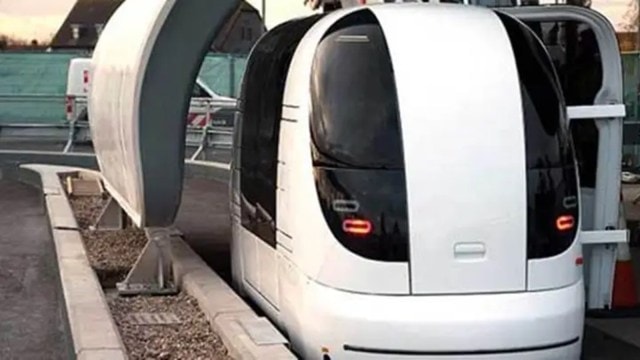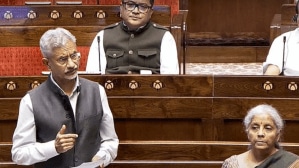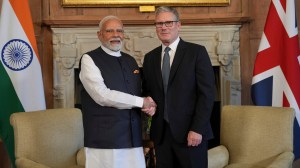Driverless pod taxis to glide on 8-metre-high elevated tracks in BKC
In September, the MMRDA received approval to initiate the Rs 1,016-crore project, expected to become operational by 2027.
 The pod taxi system will cover an 8.8-kilometre route within BKC. Each pod measures 3.5 metres in length, 1.47 metres in width, and 1.8 metres in height, accommodating up to six passengers at a time, with a maximum speed of 40 kmph. (File Photo)
The pod taxi system will cover an 8.8-kilometre route within BKC. Each pod measures 3.5 metres in length, 1.47 metres in width, and 1.8 metres in height, accommodating up to six passengers at a time, with a maximum speed of 40 kmph. (File Photo)The Mumbai Metropolitan Region Development Authority (MMRDA) is poised to revolutionise travel in the Bandra Kurla Complex (BKC), one of India’s premier business districts, with the introduction of driverless pod taxis. These innovative vehicles will operate on elevated tracks just eight inches wide, supported by eight-metre-high pillars, ensuring that road space remains unobstructed.
In September, the MMRDA received approval to initiate the Rs 1,016-crore project, expected to become operational by 2027. Sai Green Mobility Private Limited has been appointed to implement and operate the project under a Public-Private Partnership model, with plans to recover costs over 30 years.
“These pod taxis will glide along an elevated track that maintains a minimal physical footprint, allowing for free-flowing traffic on the streets below. The fully automated pods will operate on a network featuring 38 stations throughout BKC, providing convenient access for commuters,” said MMRDA Commissioner Sanjay Mukherjee.
The pod taxi system will cover an 8.8-kilometre route within BKC. Each pod measures 3.5 metres in length, 1.47 metres in width, and 1.8 metres in height, accommodating up to six passengers at a time, with a maximum speed of 40 kmph. The depot will be located within BKC.
The MMRDA anticipates that the pod taxi system will significantly enhance last-mile connectivity for the 4 lakh to 6 lakh daily commuters travelling to BKC. With upcoming projects, such as the Bullet train and new commercial developments, expected to increase foot traffic, efficient last-mile solutions are essential. The autonomous pods will run at intervals of 15 to 30 seconds, making them ideal for navigating the narrow roads connecting BKC with Bandra and Kurla suburban stations.
The decision to adopt the pod taxi system followed a comprehensive Techno-Economic Feasibility Study (TEFS) commissioned by the MMRDA in response to complaints that the district’s rapid expansion had made commuting increasingly challenging. The study evaluated various global technologies and concluded that the pod taxi system was best suited to BKC’s layout and projected traffic growth.
Fare structures for the pod taxis were developed based on surveys of current auto-rickshaw and bus users. Currently, commuters pay around Rs 15.33 per kilometre for auto-rickshaws and Rs 30 to Rs 40 for shared autos between Bandra or Kurla and BKC. Taxi fares average Rs 18.67 per kilometre, while ride-sharing services like Ola and Uber charge Rs 80 to Rs 100 for short trips of 2-3 kilometres. Surveys indicated that 70% of auto users and 36% of bus users are willing to pay Rs 21 per kilometre for the convenience of the pod taxi service.
Consequently, the TEFS study recommends a fare of Rs 21 per kilometre, with a 4% annual increase to accommodate inflation and operational costs. The project is expected to take three years to complete, with the operating agency managing the system for 30 years under a revenue-sharing model with the MMRDA.
Mukherjee emphasised the importance of completing the project within the three-year timeframe. If successful, the pod taxi system could be expanded to other areas of Mumbai, providing a futuristic and cost-effective transportation option for the city’s rapidly growing population.












